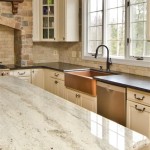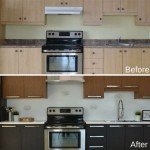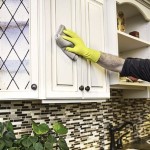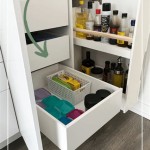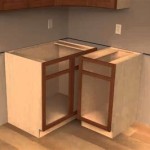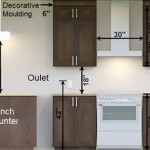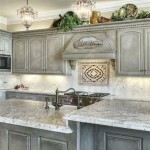```html
Kitchen Cabinet Refurbishing: A Comprehensive Guide
Kitchen cabinet refurbishing offers a cost-effective alternative to complete cabinet replacement, allowing homeowners to revitalize their kitchen's aesthetic appeal without incurring significant expenses. The process involves updating the existing cabinet structure through techniques such as cleaning, repairing, refinishing, and refacing. Understanding the nuances of each approach is crucial for achieving a satisfactory and long-lasting result. Successfully refurbishing kitchen cabinets requires careful planning, meticulous execution, and a consideration of the cabinets' existing condition and the homeowner's desired outcome.
The decision to refurbish rather than replace cabinets often stems from budgetary constraints or a desire to preserve the existing kitchen layout. Refurbishing can significantly reduce material costs and labor fees associated with a complete renovation. Furthermore, it minimizes disruption to the home and allows homeowners to retain the functionality and dimensions of their existing storage spaces. However, thorough assessment of the cabinet's structural integrity is paramount before proceeding with any refurbishing project. Cabinets exhibiting extensive damage or decay may necessitate replacement rather than refurbishment.
Assessing the Cabinet's Condition
A comprehensive evaluation of the kitchen cabinets is the initial step in any refurbishing project. This assessment involves identifying areas of damage, wear, and tear, including loose hinges, damaged drawer slides, chipped paint, water damage, and structural instability. The assessment should encompass all components of the cabinet, including the doors, drawers, frames, and interior shelves. The type and extent of damage will dictate the appropriate refurbishing techniques required.
Wood cabinets are susceptible to various types of damage, including scratches, dents, and water stains. Laminate cabinets, while more resistant to moisture, can experience peeling, chipping, and delamination. Cabinets located near the sink or dishwasher are particularly vulnerable to water damage, which can lead to warping, rotting, and mold growth. Addressing these issues promptly is crucial to prevent further deterioration and ensure the longevity of the refurbished cabinets. In some cases, damaged components may need to be replaced entirely rather than repaired.
In addition to assessing the physical condition of the cabinets, it is also important to evaluate their overall style and design. Refurbishing provides an opportunity to update the cabinets' appearance to align with current trends or the homeowner's evolving taste. This may involve changing the hardware, repainting or staining the cabinets, or adding decorative elements. The assessment phase should include a clear understanding of the desired aesthetic outcome to guide the selection of appropriate refurbishing techniques and materials.
Refinishing vs. Refacing: Understanding the Options
Refinishing and refacing are two distinct approaches to cabinet refurbishment, each offering different levels of transformation and cost. Refinishing involves updating the surface of the existing cabinet doors and frames, typically through sanding, staining, or painting. Refacing, on the other hand, entails replacing the cabinet doors and drawer fronts while retaining the existing cabinet boxes. The choice between refinishing and refacing depends on the condition of the existing cabinets, the desired aesthetic outcome, and the homeowner's budget.
Refinishing is a suitable option for cabinets in good structural condition with minor surface imperfections. This process involves removing the existing finish, sanding the wood to create a smooth surface, and applying a new coat of stain or paint. Refinishing allows homeowners to change the color and sheen of their cabinets without altering their underlying design. It is a relatively cost-effective option, especially for solid wood cabinets. However, refinishing may not be appropriate for cabinets with extensive damage or those made of materials that are not easily sanded and refinished, such as laminate or thermofoil.
Refacing is a more extensive refurbishment option that involves replacing the cabinet doors and drawer fronts with new ones. This approach allows homeowners to completely transform the appearance of their kitchen cabinets without the expense and disruption of replacing the entire cabinet structure. Refacing is a good option for cabinets with solid, well-constructed boxes but outdated or damaged doors. The existing cabinet boxes are typically covered with a veneer or laminate that matches the new doors, creating a cohesive and updated look. Refacing offers a wider range of design options than refinishing, as homeowners can choose from a variety of door styles, materials, and finishes. However, it is generally more expensive than refinishing due to the cost of the new doors and the labor involved in installation.
The Refurbishing Process: A Step-by-Step Guide
The specific steps involved in refurbishing kitchen cabinets will vary depending on the chosen method (refinishing or refacing) and the condition of the existing cabinets. However, a general overview of the process includes several key steps. These steps ensure a professional and durable final outcome.
Preparation: This crucial step involves removing all hardware (knobs, pulls, hinges), cleaning the cabinets thoroughly to remove grease and grime, and protecting the surrounding work area with drop cloths and painter's tape. For refinishing, the existing finish must be removed through sanding or chemical stripping. For refacing, the existing doors and drawer fronts are removed, and the cabinet boxes are prepared for the application of the new veneer or laminate.
Repairing Damage: Any existing damage, such as dents, scratches, or water damage, must be repaired before proceeding with the refinishing or refacing process. Wood filler can be used to fill dents and scratches, and damaged areas can be sanded smooth. Loose hinges and drawer slides should be tightened or replaced. Addressing these issues at this stage ensures a smooth and uniform surface for the new finish or veneer.
Refinishing or Refacing: For refinishing, the cabinets are sanded to create a smooth surface and then primed to ensure proper adhesion of the new finish. Multiple coats of paint or stain are applied, allowing each coat to dry completely before applying the next. A clear topcoat is often applied to protect the finish and enhance its durability. For refacing, the new veneer or laminate is applied to the cabinet boxes, ensuring a seamless and professional finish. The new doors and drawer fronts are then installed, along with new hardware.
Hardware Installation: Once the refinishing or refacing is complete, the new or original hardware (knobs, pulls, hinges) is installed. Proper alignment of the hardware is essential for ensuring smooth operation of the doors and drawers. The choice of hardware can significantly impact the overall aesthetic of the refurbished cabinets, so it is important to select hardware that complements the chosen finish and style.
Final Touches and Cleanup: After the hardware is installed, a final inspection is conducted to ensure that all components are properly aligned and functioning correctly. Any imperfections are addressed, and the work area is thoroughly cleaned. The refurbished cabinets are then ready for use.
Selecting the right paint or stain is a critical step in the refinishing process. Consider the existing kitchen décor and the desired aesthetic outcome when choosing a color. High-quality paints and stains that are specifically designed for cabinets are recommended for enhanced durability and resistance to wear and tear. It's often beneficial to test the color on a small, inconspicuous area of the cabinet before committing to the entire project.
Proper ventilation is crucial during the refinishing process, especially when using paints or stains that contain volatile organic compounds (VOCs). Work in a well-ventilated area or use a respirator to protect yourself from harmful fumes. Follow the manufacturer's instructions carefully when applying paints, stains, and other finishing products.
When refacing cabinets, selecting the right type of veneer or laminate is essential for achieving a durable and attractive result. Consider factors such as moisture resistance, scratch resistance, and ease of cleaning when making your selection. Ensure that the veneer or laminate is properly adhered to the cabinet boxes to prevent peeling or bubbling. A professional installer can ensure a seamless and long-lasting finish.
Maintaining the refurbished cabinets is essential for preserving their beauty and functionality. Clean the cabinets regularly with a mild detergent and water. Avoid using abrasive cleaners or scouring pads, as these can damage the finish. Promptly wipe up any spills or splatters to prevent staining. Periodically inspect the hardware and tighten any loose screws or hinges. Proper maintenance will help to extend the lifespan of the refurbished cabinets and keep them looking their best for years to come.
```
Cabinet Refinishing An 8 Step Guide For Pro Painters Ppc

Cabinet Refinishing Guide

How To Refinish Cabinets Like A Pro

Cabinet Refacing Process And Cost Compared To Painting

Our Refacing Process Kitchen Magic

Refinishing Kitchen Cabinets Modern Refacing Made Easy Wisewood

Cabinet Refinishing N Hance

Kitchen Refurbishment Matt Finish Respray Ltd

How To Resurface Kitchen Cabinets 2024 Guide Forbes Home

How Does Kitchen Cabinet Refacing Work
Related Posts

